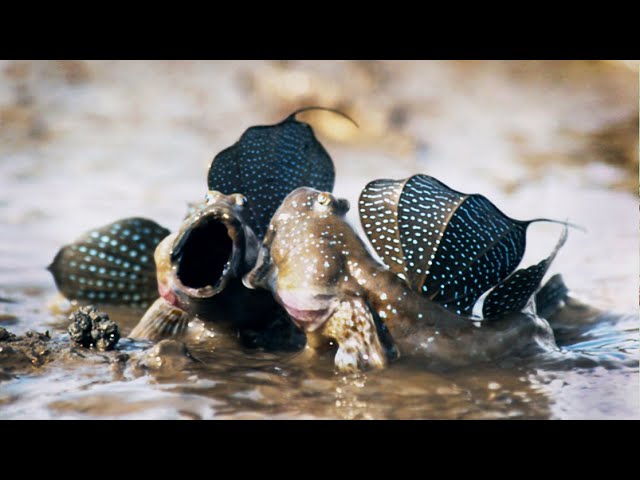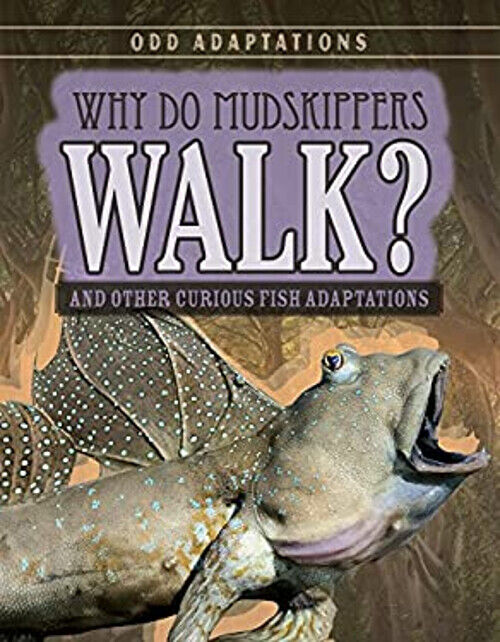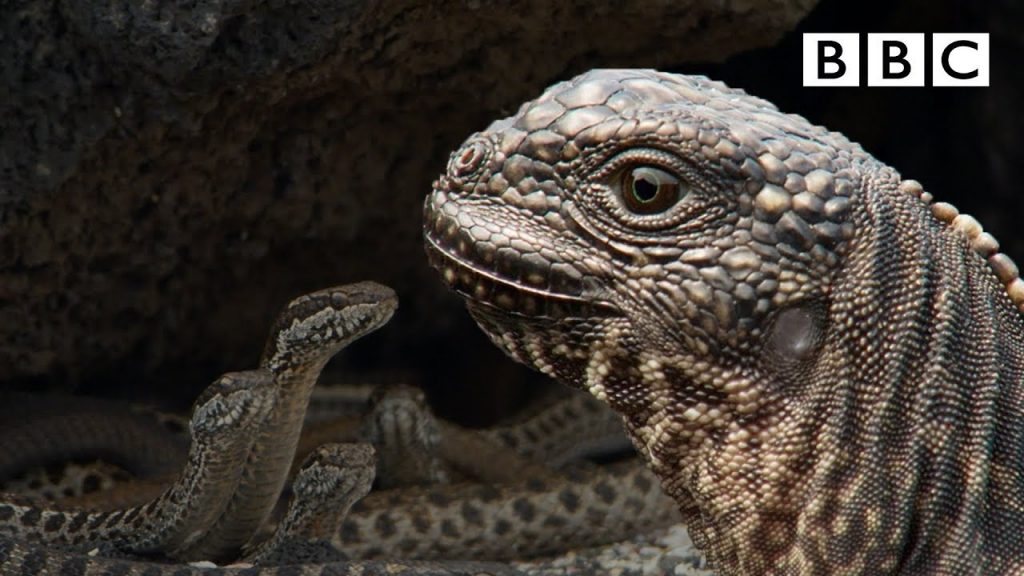Mudskippers: The Fish That Walk on Land

Fish That Walk?
Meet the mudskipper – the fish that walks on land and breathes air!
How do mudskippers contribute to the food chain and biodiversity of coastal regions?
Introduction
Mudskippers are specialized fish species that can survive both in water and on land. These fish species are commonly found in the mudflats and mangrove swamps of the Indo-Pacific region. Mudskippers are unique in their ability to crawl, climb, breathe air, and even produce sounds out of water. These fish species have piqued the interest of scientists and the general public alike for decades, making them an intriguing subject of study and fascination.
Morphological characteristics
Mudskippers have certain morphological characteristics that enable them to survive on land. Their bodies are flattened and elongated, and they possess strong pectoral fins that they use to crawl and climb on muddy surfaces. Additionally, mudskippers have bulging eyes that help them see both above and below the water surface, ensuring that they can spot predators and prey. Mudskippers can also breathe air through their skin, throat, and mouth cavity. When on land, they will inhale air much like humans, filling their gills with oxygen to survive.
Behavioral characteristics
Mudskippers have certain behavioral characteristics that enable them to live both in the water and on land. When in water, mudskippers swim like any other fish species, using their pectoral fins to propel and maneuver their bodies. However, when on land, mudskippers use their fins to walk, climb, and dig burrows. Mudskippers are capable of leaping out of water to escape predators and move from one water pool to another. These fish species also love to sunbathe by basking in the sun to catch some warmth and boost their metabolism.
Diet and reproduction
Mudskippers feed on a variety of prey in both water and land environments. They feed on small crustaceans, insects, and various kinds of vegetation. Mudskippers have an elongated mouth and strong teeth that they use to catch and crush their prey. Mudskippers reproduce through internal fertilization and can lay eggs in their self-constructed burrows, ensuring that the eggs receive adequate moisture and protection from predators.
Importance and conservation
Mudskippers play a vital role in maintaining the ecological balance of the coastal regions. They contribute to the food chain and increase biodiversity. However, these fish species are under threat due to habitat destruction caused by urbanization, pollution, and climate change. It’s crucial to protect their habitat and conserve these unique fish species to promote biodiversity and maintain a healthy ecosystem.
Conclusion
Mudskippers are an amazing example of evolution and adaptation, exhibiting behaviors and characteristics that are unique to their species. These fish species have managed to adapt to life both in water and on land and have caught the interest and curiosity of scientists and the general public alike. But, to preserve these amazing creatures for generations to come, we must promote conservation efforts and sustainable development practices.










How This Guy Makes Record-Breaking Balloon Sculptures
Centipedes: The Ultimate Nopes
16 Camping Pranks And Life Hacks
Inside Liv Tyler’s Gut-Renovated NYC Brownstone
True cost of US healthcare shocks the British public